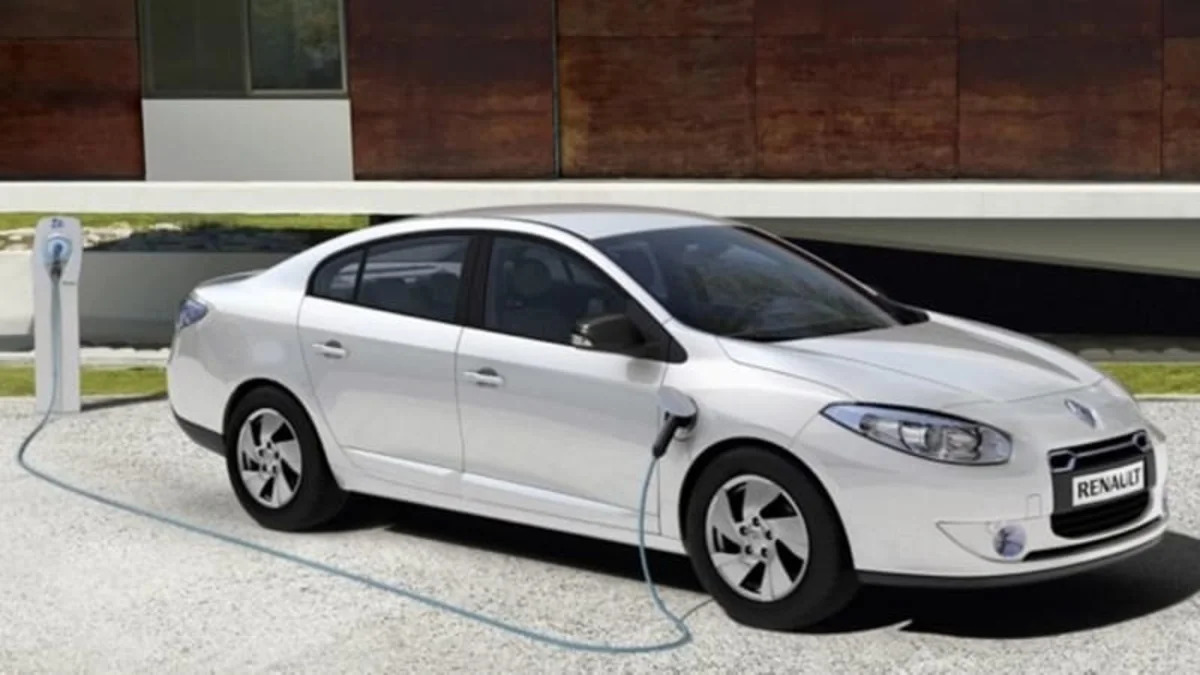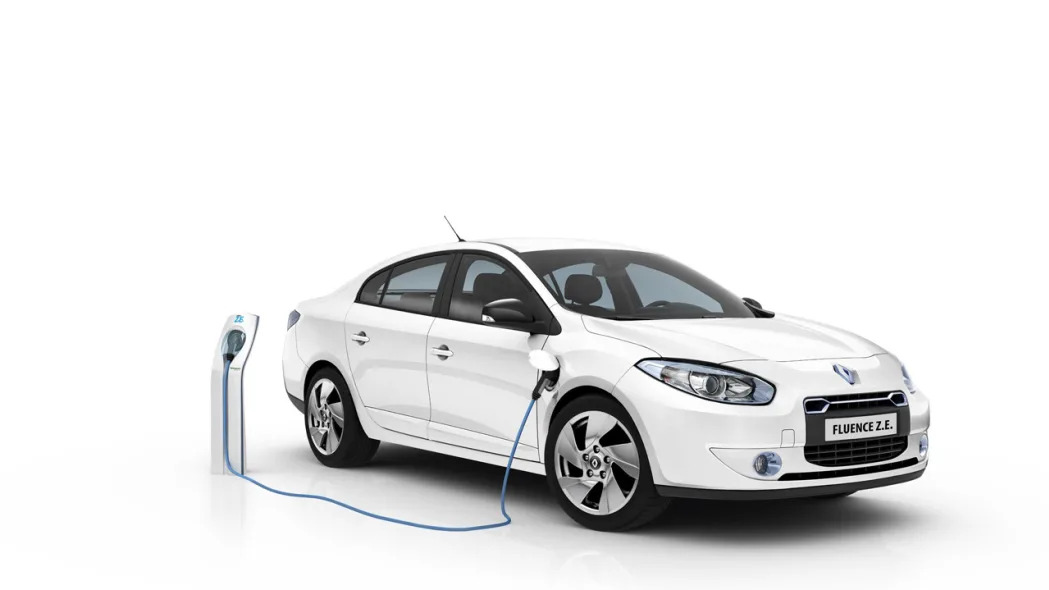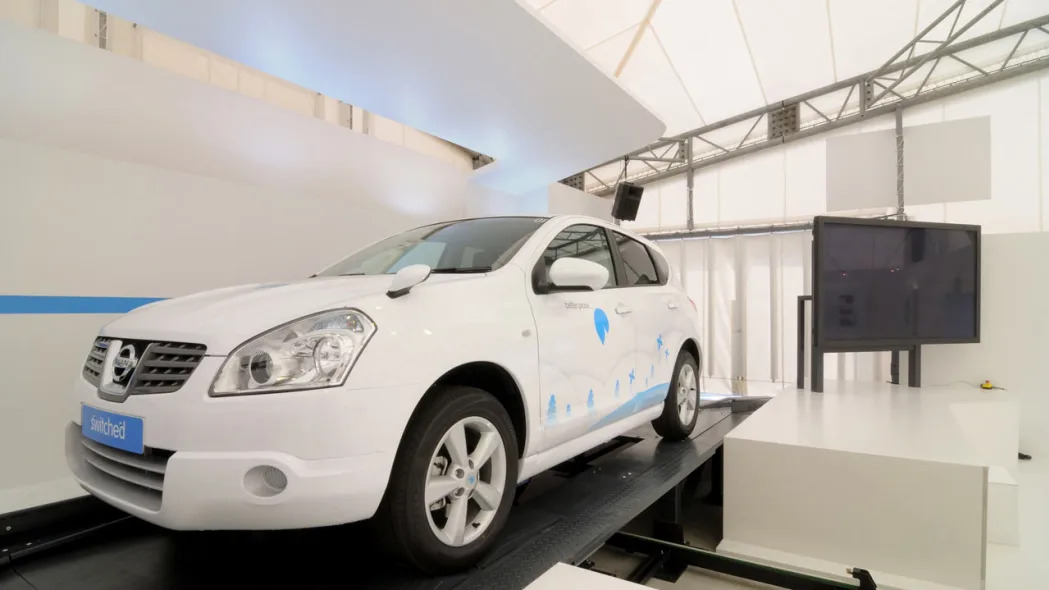Renault Fluence Z.E. – Click above for high-res image gallery
Some of the people who work for Better Place see their job as something bigger than themselves. Take, for example, Jason Wolf, North American vice president, John Proctor, communications and Michael Granoff, head of oil independence policies. AutoblogGreen interviewed these three at the Business of Plugging In conference and they all spoke on top of each other as they answered our questions. So much so that they said they're happy to share quote attributions for this story. It's illustrative for how the company thinks: we've got big problems facing us, so let's work together to solve them.
As the story goes, Shai Agassi, the founder and chief executive of Better Place, wanted to answer one seemingly simple question: "How do you run a country without oil?" The solution he came up with involves electric cars with swappable batteries. From there, he worked in a holistic manner and thought through the issues of overpowering transformers and charge spots, convenience and affordability, and he now has two automakers publicly committed to the strategy and a lot of people unsure that he's on the right track. Does his vision have a chance to work in an era of ever-cheaper batteries and auto companies that use proprietary battery chemistries and styles? His employees sure think so, as you can read after the jump.
[Source: Better Place]

In truth, Better Place doesn't want to sell electric vehicle (EV) charge spots or battery switch technology – it's all about selling miles (or, for some, kilometers). As regular readers will surely remember, Better Place compares its strategy to cell phones. You get a cheap phone but pay out the nose each month to use it. When applied to automobiles, this allows Better Place to lower the up-front cost of the vehicle to the consumer (well, maybe) because Better Place takes care of the batteries and the chargers. The representatives told ABG that, since Better Place is, in the end, competing against the cost of a gallon of gas that provides 20 miles of range, the fact that there are so many vehicle charger companies out there is actually a good thing. More players means the price points for the components comes down, which helps Better Place even as it helps the whole EV industry. This doesn't mean all of Better Place's plans move forward without a hitch. The company's Denmark roll-out, for example, has been slowed down.
Over the next ten years, there will be two big shifts happening in automotive batteries: lower cost and higher capacities. The first works well for Better Place, a company that wants to buy and own the packs; but the second could be a problem, at least for the swapping model:
One big problem, though, is that automakers are making advanced batteries a part of the structure of the new plug-in vehicles. If they do this then the company will never be able to take the battery out of the vehicle to put into a new one. Thus far, only Renault and Chery have said they will work with Better Place on a swappable battery vehicles. We were told there are others in the pipeline, though, and Better Place's vision, again, lies in cell phones:People sometimes misperceive and say there is no Moore's Law for batteries. What there is, is something of a Moore's Law for the electric mile, because not only is the battery getting cheaper but the cycle life is expanding, so each of those miles is cheaper for us. The same volume metric that gives you 100-mile battery today will give you a 200-mile battery in five years, but I think people are going to say, "I don't want to carry around 100 miles of battery that I won't use but a few times a year. I'd rather have the ability to go and switch and have that much more space in the car, that much less weight in the car." It's an unused asset.
That thing, Better Place believes, is swapping batteries and selling miles to make electric vehicles easy to buy, drive and use. "Ultimately, when you go back to the economics and look for a solution that's going to compete for the masses, not the early adopters, it has to be a solution that will be cost-competitive and functional." Don't forget, too, that the Better Place's business model includes a charging infrastructure, not just the battery swaps. The model, in 80 percent of the Western world, we were told, based on today's figures, is "profitable from day one."You can rest assured that we are working with a lot of other OEMs. Just like when Apple had to bring out the first iPhone, it wasn't like those old Nokias that you could just slip a new chip in. They had to work very tightly with AT&T to bring that first product to market. Now it's easier to replicate and bring out more of these devices. Five-to-ten years ago, no one built these [holds up an iPhone]. As time progressed, they built more advanced things to this kind of thinking. What's going to happen is, of course, is that people will see the need to change and they will go with what they can.
There are ways to make it cheaper, too, like getting GE Capital to finance the first 10,000 batteries in Denmark and Isreal. "That's a big deal, because suddenly you've taken that money out of the vehicle and it's a much more affordable vehicle for consumers. Car companies are definitely going to notice these kinds of announcements." The U.S. market, though, is what many ABG readers are most interested in, and here's how Better Place sees its role in the plug-in vehicle space here:You have a gap between the margin that it costs us to operate our network and the cost that it costs you to drive a gasoline vehicle. We've already got a positive arbitrage margin that we can play with. In countries where gasoline is $3 or $4 and below, you've still got a margin, but it's much more tight. That means that where Better Place puts most of its investors' money to earn that return is going to be in countries that have policies and prices that are already existant. We don't have to ask the Danish or Isreali govenments or all of Western Europe – they've got $6, $7 a gallon, which works out to 30 cents a mile, whereas here [in the U.S., using gasoline] it's 12 cents a mile. Our model is pretty much the same price no matter where you go.
Whatever happens to Better Place in the next ten years, it'll be because of what happens in China:What we think is going to happen in the U.S. is that there will be the early adopters, which have to succeed and, over time, if you're adding 10 million vehicles a year, you're not going to be able to keep gas prices where they are today. And then there are legislative forces that might lead to higher gas prices in any case. So we're working on bringing switchable vehicles at a competitive price that will hit this market in 2013 and beyond. There's a lot of work to be done in laying out the network and that's why we've announced partnerships in markets like Hawai'i, California and Ontario. We're in this for the long term, because we see this transition as inevitable.
So, with all of these points supposedly in Better Place's favor, what is it like when the company goes to an OEM and tries to get them on board with battery swapping and the whole "selling miles" thing?One of the things we're seeing is that China has made a strategic decision on a national level to go electric. As they start to implement that and as they look at what that means, we're starting to see that they are looking at separating the battery as a key element to doing that. One possible path that it takes is that China ends up doing this so big that it creates a global industry.
Renault's electric Fluence, for example, is being marketed throughout Europe but Renault did not create two versions of the car. The vehicle is almost exactly the same everywhere, but in places where Better Place is involved, the battery is swappable. The OEMs are still skeptical, "but they certainly have open minds and are watching closely what is happening in Israel." To this end, Better Place is making sure its demonstration projects, especially the taxis in Yokohama, are highly visible so as to prove that the system works.The conversation has evolved. Electric vehicles are a much bigger part of the conversation now than they were two years ago. Two years ago, I was on a panel in D.C. and we were asked to give predictions on 2020 penetrations of EVs and one of the members – I won't say the name but a European company – said it's all about diesels. A few months ago, they also announced a plug-in. Everybody has made the step to realize that electricity is cost-competitive. I don't think there is anybody that will publicly say what they say internally, because they have their product pipelines. [The EVs] that are coming are fine for the early adopters, for the Prius owners who are now going to be Leaf owners and Volt owners. Then they will take a step back and say what the mass market answer is and I think they'll come to this conclusion that it makes sense to put the battery under the car. The other thing they are realizing is that they will need to service this car and battery, and they'll need to be able to take the battery out, so it's a matter of an hour switch or a minute switch. That difference is about $200 bill of materials.

Better Place and Nihon Kotsu electric taxi project – Click above for high-res image gallery
What is Better Place's best argument to the OEMs to get them to consider battery swapping? The economic case:
Need proof? How about the domestic automakers that went broke while oil company stocks are still tremendously undervalued, according to some investment analysts. Need more proof? Keep an eye out and see what happens in the next few years. We'll be watching, too.They've been in an abusive relationship for many, many year with the fuel providers. This is an opportunity for them to look at the business model differently and say, "we can make money, not necessarily only on thousands of dollars on the vehicle." They've been giving away so much money on fuel.




Sign in to post
Please sign in to leave a comment.
Continue